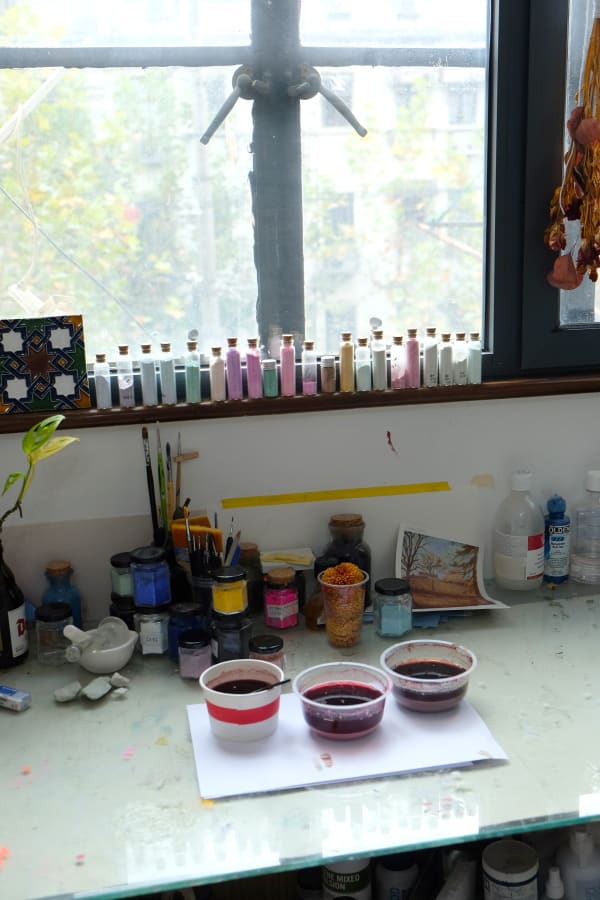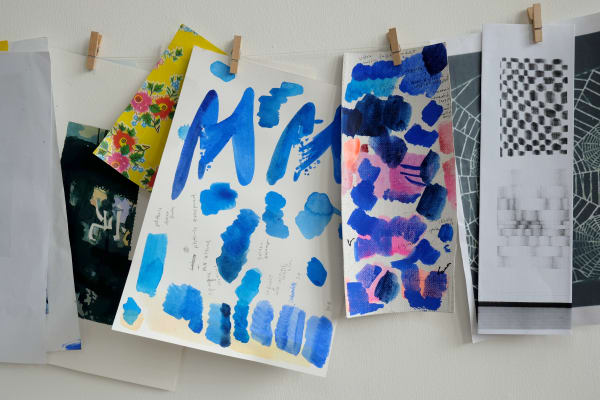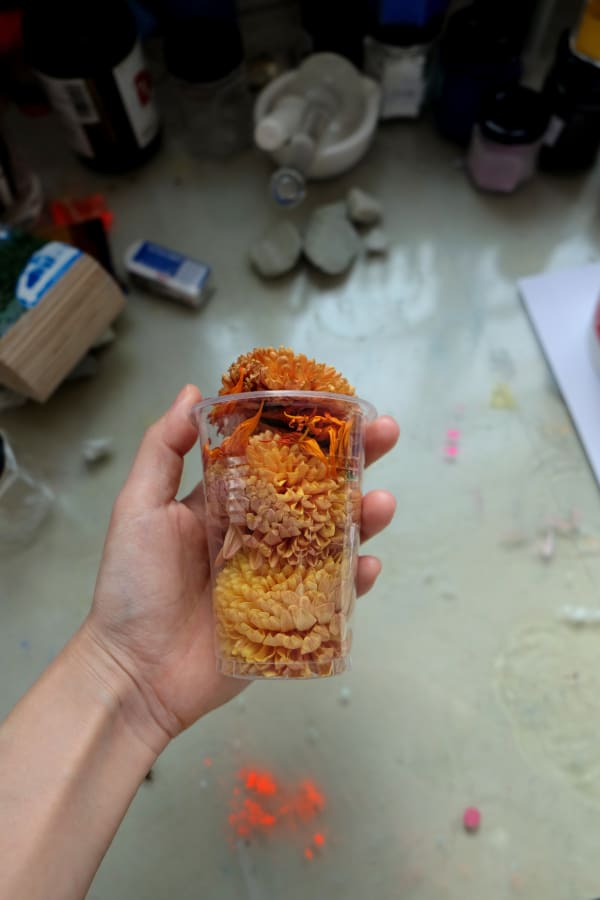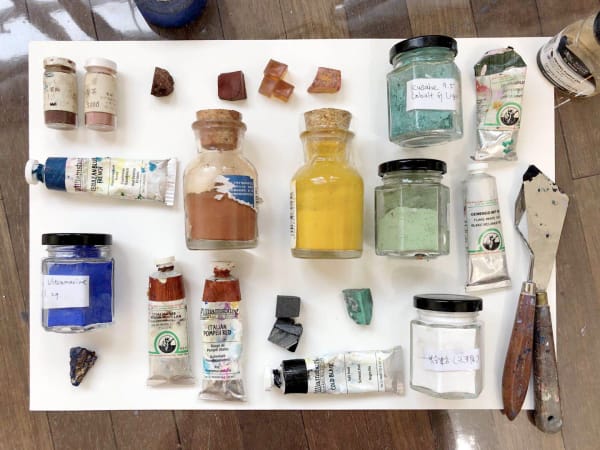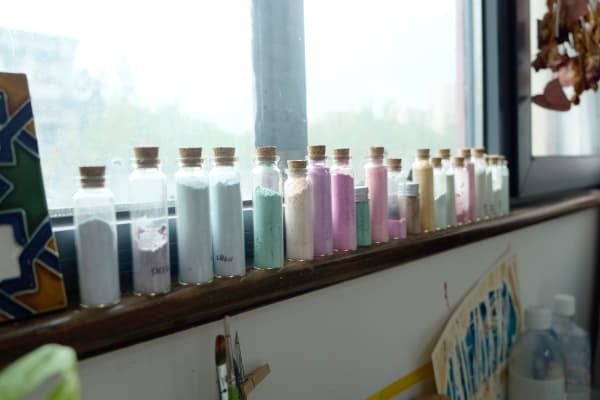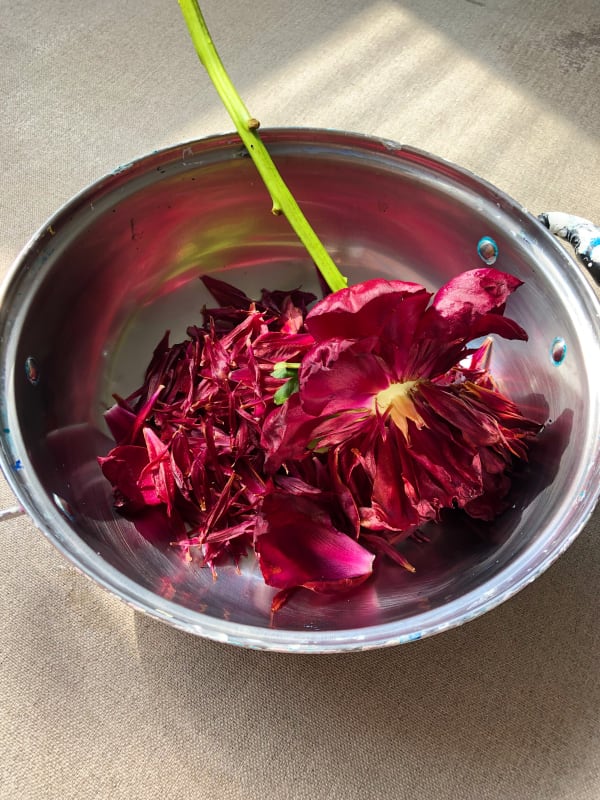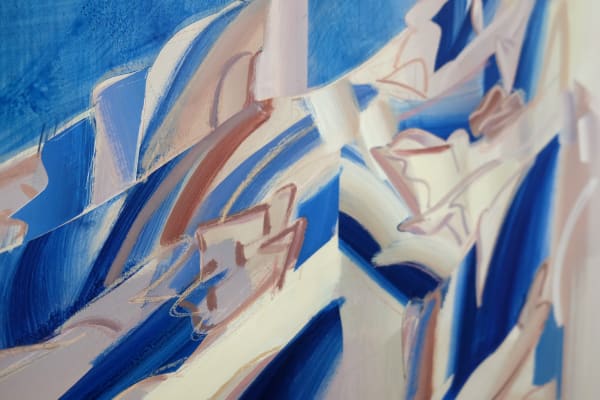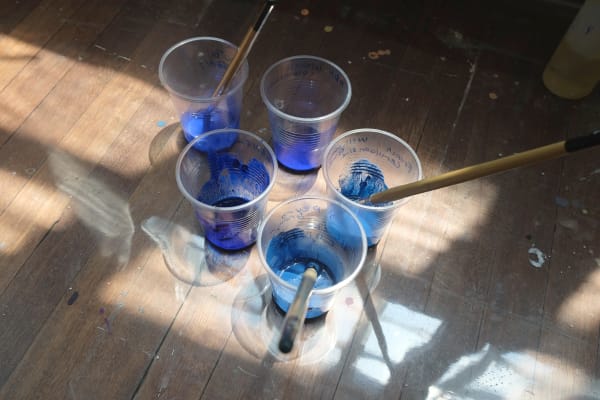Artist Su Yu-Xin walks us through her Shanghai studio, describing her relationship to the environment and approach to creating pigments.
Interviewed by Zoya Zalatimo
"I used to travel a lot, and I would collect pigment material on my trips. This year, though, I had to find local and seasonal materials for my practice. It was actually a great way to start observing the colours around me again." Su Yu-Xin on her process of making handground pigments.
How do you start your process?
I start with drawings. I draw a similar composition many times with different mediums and at varying speeds until they sort of grow into something unexpected. This is the magic of repetition. Then from there, I decide whether I’ll transfer the drawing onto another canvas or surface. In the work Unfolded, all the paints that I used to paint the ground/ earth/ rock are made from earth pigment mixed with clam clamshell powder (a common pigment used in Chinese painting for white). Unfolded presents a repeated waterfall motif, horizontally collaged into a new space/ landscape. To paint the water, I used singular, wide brush marks across the boundaries to make the composition flow together.
Are there any specific landscapes or locations that have inspired you?
The landscapes I paint are a hybrid of many locations. It reminds me of how technology connects us with distant places. Regardless of whether my pigments are mineral or plant-based, they refer to both the locations from which they were sourced and connote a specific time or season. In a sense, the paints carry narratives of the earth itself.
Can you tell us more about your process of creating pigments? How might it relate to the role of sensory perception that is central to your work?
I feel like it is impossible to talk about colours without noting the industrial and technological influences on it. For many years I only used paints from certain European or American brands. I grew to learn that these products were indirectly determining what shows up in my work. Also, I realized that outside of the European/American colour theory, or it’s the colour naming system, there is much more to explore. So, that lead me to the process of creating my own colours.
I combine a little piece from everywhere I have spent my life, Eastern Asia, Europe, and the U.S. Eventually a palette is like a living thing. It ages and migrants geographically and chronically.
Blue is a tricky colour to make because it rarely appears in nature, so I can’t usually make blue myself, and when I do it’s not saturated enough. That's why ultramarine blue remains one of the most expensive mineral colours.
How do you come up with the titles for your works?
Naming works is like translating, and painting is a language that I’m still learning to speak. I look at the finished work and think about what I hope the viewer will pay attention to, and start from there. I also often get inspiration from the books I read.
Can you speak to some of the recurring motifs in your work and their significance?
The body of water is a motif I’m fascinated with. The continuity it carries contextualizes other elements around it. I love how within a still image of landscape, there are different sensations, speeds, and manners of creating, that are mesmerising.
Su Yu-Xin's paintings are on view as part of our November group exhibition Blue until 7 January.
